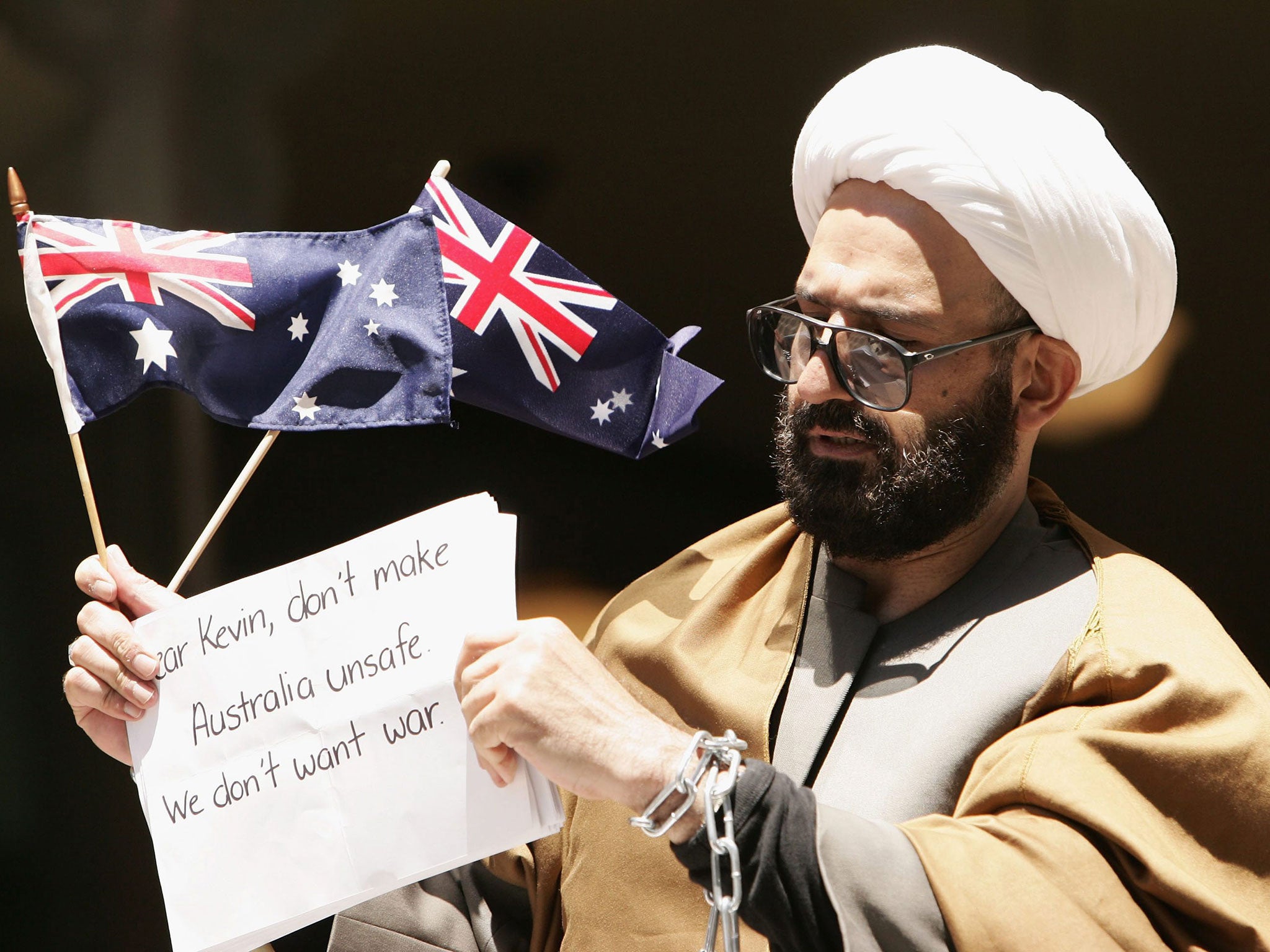Sydney siege: ‘Lone wolf’ attackers like Man Haron Monis will always remain a security nightmare
It's not unusual for terror suspects to have been noticed by the police for previous crimes


Your support helps us to tell the story
From reproductive rights to climate change to Big Tech, The Independent is on the ground when the story is developing. Whether it's investigating the financials of Elon Musk's pro-Trump PAC or producing our latest documentary, 'The A Word', which shines a light on the American women fighting for reproductive rights, we know how important it is to parse out the facts from the messaging.
At such a critical moment in US history, we need reporters on the ground. Your donation allows us to keep sending journalists to speak to both sides of the story.
The Independent is trusted by Americans across the entire political spectrum. And unlike many other quality news outlets, we choose not to lock Americans out of our reporting and analysis with paywalls. We believe quality journalism should be available to everyone, paid for by those who can afford it.
Your support makes all the difference.The siege in Sydney has once again raised the spectre of attacks by “lone wolves” – extremely difficult for the security agencies to stop and relatively easy to instigate and carry out.
It could transpire that hostage-taker Man Haron Monis had links with terrorist organisations. But all the indications are that he fitted the profile of an individual carrying out armed action for political or religious reasons, sometimes mixed with personal ones, alone or with a small group of helpers.
The latest assault fits into a pattern. There was the murder of Fusilier Lee Rigby in London by two young British Muslims; the Boston marathon bombings by two brothers originally from Chechnya; the shooting at the Jewish Museum in Brussels by a French jihadist, to name just a few more recent and high-profile cases.
Although the numbers are rising, the phenomenon itself is not new, nor are the ones responsible always Islamist extremists. Just in the UK, neo-Nazi David Copeland’s nail bombing campaign killed three people and injured 129 others in 1999. Seven years previously, RUC constable Allen Moore shot three Catholics dead before turning the gun on himself in Belfast. Two of the biggest mass killings were carried out by far-right followers: Timothy McVeigh killing 168 in Oklahoma City in 1995, and Anders Breivik, 77 in Norway in 2011.
But what is different now is the proficiency and regularity with which terrorist groups are calling on Muslims to carry out jihad against “kufirs”, or non-believers, in the countries in which they live. Monis, an Iranian, was born a Shia. The incitement for attacks have overwhelmingly come from radical Sunni leaders and terrorist groups.
The claim that he had demanded an Isis flag to hang on the café window may have seemed strange, since that organisation has been busy killing Shias, who they regard as apostates, in Iraq and Syria. He had, however, recently stated online that he “used to be a Rafdi”, a pejorative term for Shias used by Sunnis, “but no more”.
The American born Sunni cleric Anwar al-Awlaki, the “Bin Laden of the Internet”, was among the first to see the scope of accessing would-be jihadists in their homes. He was highly successful in his mission before being tracked down by the CIA and killed in a drone strike in Yemen. Isis has asked people of similar ilk to carry out beheadings, tapping into widespread publicity they have received through that gruesome form of killing. And, as arrests show, there are more than a few prepared to attempt kidnapping and decapitating in the streets of towns and cities in the West.
The police and security services face obvious difficulties in foiling the threat, lacking the advantage offered by others affiliated to known terrorist organisations who make telephone calls and send emails to each other, often in a surprisingly wide sphere, which can be intercepted.
Michael Adebolajo and Michael Adebowale, who butchered Fusilier Rigby, had come on to the radar of MI5 and MI6, but were not deemed serious risks and thus avoided intense scrutiny. Such has been the rise in the numbers of those involved in Muslim extremism that the security agencies say they simply do not have the assets to watch them all.
Monis had been sending hate letters to the families of dead Australian soldiers. It is not unusual for terror suspects to first come to the notice of the police for varying degrees of crime. Adebolajo was a drug dealer, Rashid Rauf, who plotted to blow up transatlantic airliners, was wanted by West Midlands police for the murder of his uncle in Birmingham. The siege in Sydney’s Martin Place ended fairly quickly with less bloodshed than some had feared, but attacks by “lone wolves” will continue and the security agencies will continue to struggle to combat this rising tide of terror.
Join our commenting forum
Join thought-provoking conversations, follow other Independent readers and see their replies
Comments